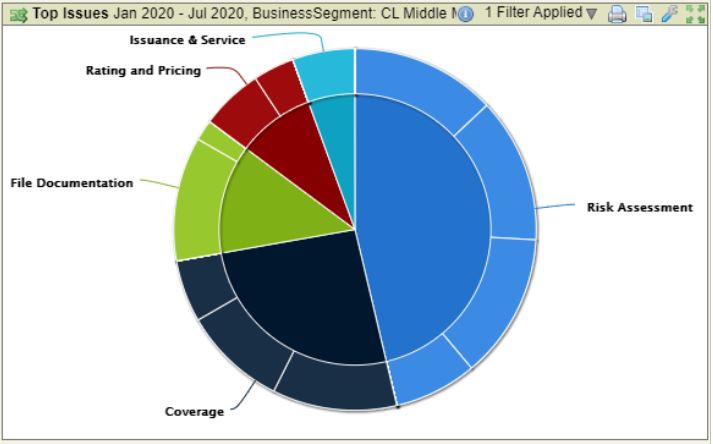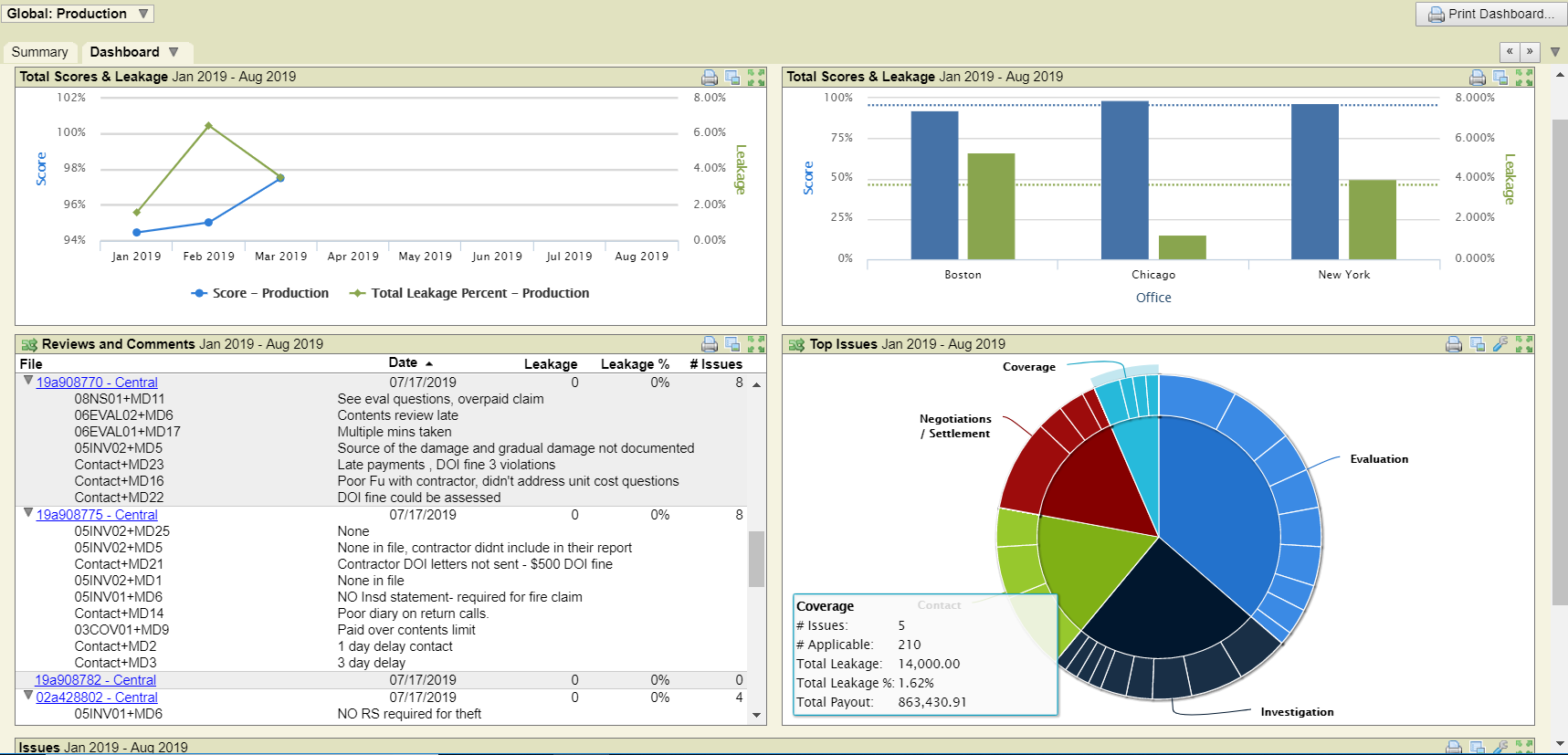Are you capturing the right data during insurance audits?
Having a robust quality assurance process is key to driving continuous improvement at insurance carriers. However, what truly makes a QA process successful? Is it the ability to capture rich, granular data in your program? Is it about using the right questions to identify issues? Does it come down to following up action items and implementing plans to consistently target opportunities? Or perhaps, is it a combination of all of these and more? In this blog, we’ll discuss how capturing key pieces of data, and ensuring they are being captured in the right way, can best lead to success for your QA program.
Capturing root causes
 The first key piece of data to make sure you’re capturing are root causes or drivers. Root causes are extremely important granular details that allow the QA team to properly identify where to attribute issues in the claims or underwriting process. For example, it is useful to identify that a Cat risk assessment was not completed – but understanding why it was not completed can help to better identify training opportunities and changes to best practices for the underwriters. And using root causes completes this action without having to text mine a free form response. Root causes help to focus efforts and provide concise feedback – both at the individual contributor-level (claims handler or underwriter) and the organizational level. As a manager, you’re able to identify specific issues rather than broad topics – the feedback thus becomes actionable. It gives you a holistic view and an opportunity to see if the measures you are taking to improve over time are in fact working. Without capturing root causes in your QA audits, it’s much harder to get the same level of information – typically requiring longer questionnaires, more focus reviews and lots of trial and error.
The first key piece of data to make sure you’re capturing are root causes or drivers. Root causes are extremely important granular details that allow the QA team to properly identify where to attribute issues in the claims or underwriting process. For example, it is useful to identify that a Cat risk assessment was not completed – but understanding why it was not completed can help to better identify training opportunities and changes to best practices for the underwriters. And using root causes completes this action without having to text mine a free form response. Root causes help to focus efforts and provide concise feedback – both at the individual contributor-level (claims handler or underwriter) and the organizational level. As a manager, you’re able to identify specific issues rather than broad topics – the feedback thus becomes actionable. It gives you a holistic view and an opportunity to see if the measures you are taking to improve over time are in fact working. Without capturing root causes in your QA audits, it’s much harder to get the same level of information – typically requiring longer questionnaires, more focus reviews and lots of trial and error.
Capturing leakage
In addition to root causes, leakage is an important data point to capture – whether that’s under/overpayment in claims or incorrect premiums during the underwriting process. Capturing leakage allows you to better improve financial outcomes across the company. And when combined with root causes, leakage can help assess just how severe a problem is and where specifically that problem is coming from. Leakage is also important from a communication standpoint. By knowing the numbers, it give your department the chance to quantify financial opportunities and thus, make a more informed decision on which opportunities to focus on in the future. Quantifying leakage can also help with executive buy-in and credibility for QA across the organization.
Creating flags & action items
Capturing the right type of data like root causes and leakage is important in the analysis of your results. But if you’re looking to better make use of that data in creating action plans, it’s just as important to flag specific issues during the questionnaire process. In underwriting, there are active policies that can be adjusted before being bound – or renewal decisions that can be made based on new information. And in claims, open files can be re-examined before any money is paid out to ensure complete accuracy. By attaching ‘flags’ to specific questions, issues, or root causes, reviewers can highlight the need to prioritize changes to the file – like correcting an authority violation or identifying an incorrect form and making sure the right form gets executed. Or in open claims, flags can ensure the file gets sent to subrogation when it’s been identified in the review process – or indicate the potential for fraud so it is followed-up with appropriately. These action flags are crucial not just for targeting and identifying necessary changes in policies and claims, but also for providing training opportunities and improving best practices.
Looking at the bigger picture
Finally, when looking back on your QA process, it’s important to answer three questions:
- Did we do the right thing for the customer?
- Did we do the right thing for the company?
- Would we want to repeat this process?
In order to answer all of these questions, you need to ensure that your questions and metrics are outcome-driven, not process-driven. For example, the question ‘was the flood template filled out properly?’ addresses whether the process was followed correctly, but does little to explain whether the outcome was satisfactory. A better outcome-driven question would be ‘were the items in the flood template analyzed adequately?’ And if the answer is no, adding root causes will help better diagnose the negative outcome. Following a process certainly has its purpose – and there could (and perhaps should) be questions around that process. But a score that’s about how well you are following a process is not going to give your team great information about how well the company is performing. And it certainly won’t allow you to drive continuous improvement. Good processes don’t always lead to good outcomes – but good outcomes can help guide and change good processes into great ones.
Capture the right insights with teamthink
Does your current audit process allow you to capture root causes and leakage? Can your team flag files or create action items that allow issues to be addressed and resolved? If your team is struggling to drive continuous improvement with your audit data, it may that your QA tool is designed to audit processes rather than outcomes. The teamthink audit suite allows insurance teams to capture key data like root causes and leakage in order to understand how errors affect overall outcomes. And more importantly, teamthink helps QA teams provide actionable insights that can lead to improved outcomes and financial results. Discover why more than half of the top 25 U.S. insurance carriers trust their audits to teamthink. Learn more about the features and expansion modules, or speak with one of our QA experts today: https://www.athenium.com/products/teamthink/
Try teamthink Envoy free for 7 days
Want to try out the market-leading teamthink QA software for yourself? Signup now for a 7-day free trial of teamthink Envoy so you and your team can experience the benefits of QA automation. Redeem your trial now »


